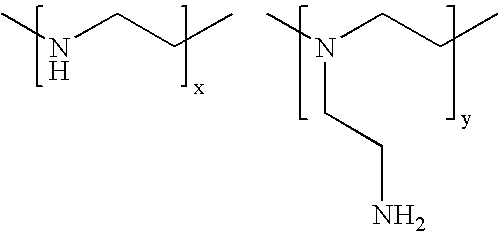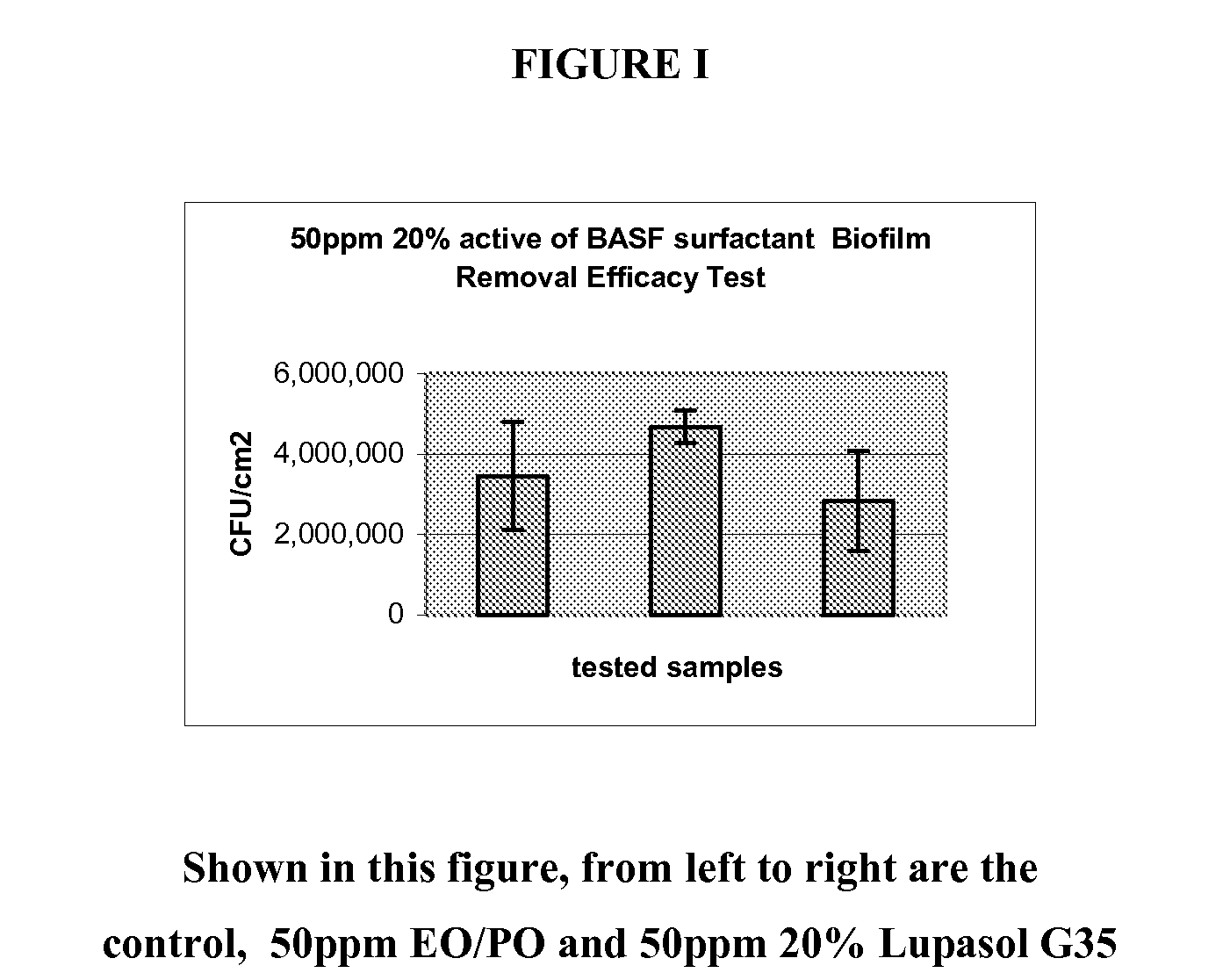Method for removing microbes from surfaces
a technology of microorganisms and surfaces, applied in the nature of treatment water, quary waste water treatment, detergent compounding agents, etc., can solve the problems of nonionic or anionic surfactants that can exhibit toxic effects on microorganisms, bacteria, algae or fungi, and clean fouled surfaces. a large amount of expenditure in many industries
- Summary
- Abstract
- Description
- Claims
- Application Information
AI Technical Summary
Benefits of technology
Problems solved by technology
Method used
Image
Examples
examples
[0018]The invention is illustrated in the following non-limiting examples, which are provided for the purpose of representation, and are not to be construed as limiting the scope of the invention. All parts and percentages in the examples are by weight unless indicated otherwise.
[0019]In order to demonstrate efficacy of the present invention, a method was developed which allowed for the screening of dispersant ability to remove a bacterial biofilm. This method involved the colonization of commercially available 316 stainless steel coupons by bacteria, and their removal in the presence / absence of dispersants. The number of bacteria on a set of coupons was then determined by standard methods.
[0020]The bacterial species Pseudomonas fluorescens was chosen for these studies as this species is one that is common on submerged surfaces, and therefore would be one that could be expected to be found in process water streams.
[0021]The biofilm attached to the 316 stainless steel was formed by s...
PUM
| Property | Measurement | Unit |
|---|---|---|
| pH | aaaaa | aaaaa |
| pH | aaaaa | aaaaa |
| weight | aaaaa | aaaaa |
Abstract
Description
Claims
Application Information
 Login to View More
Login to View More - R&D
- Intellectual Property
- Life Sciences
- Materials
- Tech Scout
- Unparalleled Data Quality
- Higher Quality Content
- 60% Fewer Hallucinations
Browse by: Latest US Patents, China's latest patents, Technical Efficacy Thesaurus, Application Domain, Technology Topic, Popular Technical Reports.
© 2025 PatSnap. All rights reserved.Legal|Privacy policy|Modern Slavery Act Transparency Statement|Sitemap|About US| Contact US: help@patsnap.com



